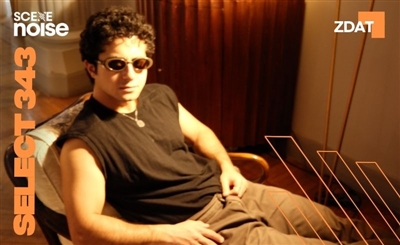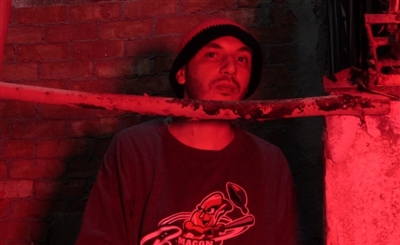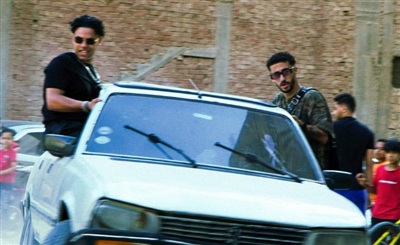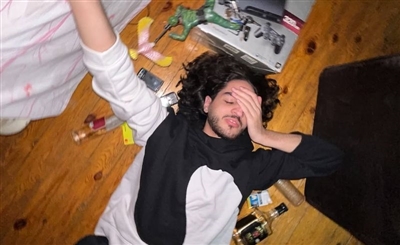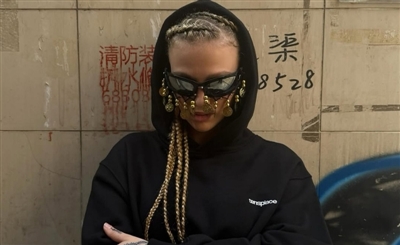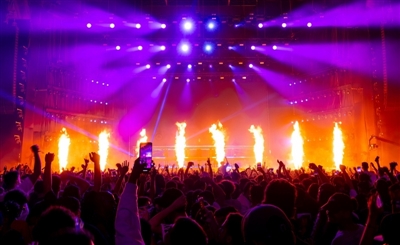Beyond the Booth: Seeing Noise with VJ Nurah Farahat
Everyone glorifies DJs and promoters, but there are a myriad of under-appreciated characters giving your favorite parties their distinctive flavor.
.jpg)
Welcome to the start of SceneNoise’s Beyond the Booth feature series, where we will expose and showcase the people that are essential to running our scene’s parties - the ones that aren’t properly credited for it. Whether it is the people in charge of sound, the visual jockeys taking you to alternate universes, the set designers or even the bartenders mixing your cocktails. Every week, we will bring you an interview with a different person of the previously mentioned industry.
Often glorified, the DJ or artist at a party has the whole crowd facing them and at times even gazing into them as if their face was the portal in which lies the key of life. We acknowledge that the DJ is the main entity tasked with tickling a party goer’s senses, but no one gives the same credit to the the person controlling the other stimulant (not your drug dealer). Through their curations, the DJ is able to create a dream-like and emotional experience inside the mind of the listener, which is why we see so many people with their eyes closed on the dance floor. Still, if more people opened their eyes and immersed themselves in the visuals, it might steer the experience in a wholly different direction.
In this first edition, we will take an in depth look into the craft, the life and what goes on inside the minds of one of our scene’s Visual Jockeys, Nurah Farahat. We saw the artist’s performance at local independent cinema Zawya, where she was performing via the internet from Bremen in Germany, while experimental music producer Nur played an emotionally intense live set filled with her own heart wrenching vocals. The visuals went really well with the theme of the music, creating a true audio visual experience where both forms of art worked hand in hand, neither of which overshadowed the other. The two artists often perform together, having also played at the Cairo Boiler Room event. Nurah Farahat is an Egyptian visual artist and 3D animator, working mainly with Cinema 4D. She builds her live performances on "loose emotional narratives that invite the audience to complete and interpret highly situational but inexplicable, relatable yet unfamiliar experiences."
<iframe width="800" height="450" src="https://www.youtube.com/embed/ybvT-ZTu41Y" frameborder="0" allow="autoplay; encrypted-media" allowfullscreen></iframe>
As VJs usually stand in the back of the party and aren’t a part of the crowd, do you sometimes feel alienated?
Not really. Seeing as I feel extremely anxious when not being able to see the projection from a distance, and I, anyway, feel present through the screen and through my visuals.
What made you get into a profession which is usually looked over?
It wasn’t really planned, but it felt like a natural extension to the things I liked and had experience with. I’ve been a video editor for 12 years, and visuals for me is an extension to that. I edit live, and I improvise, and that makes me engaged in listening to the music while I play visuals. This reminds me of the feeling you have when playing a musical instrument. When I learned to VJ, I saw it as something pleasurable that only aided the progression of my other skills.
Where did you learn your skills?
I first learned mixing from Islam Shabana at Alchem Studio and after some time, I took a turn into 3D animation which I learned through watching online tutorials.
Where do you draw your inspirations from?
From many, many sources. I usually just pick a creative restriction, and then give my preferences, my dislikes and micro-thinking some space and some time, and things happen.
<iframe src="https://www.facebook.com/plugins/video.php?href=https%3A%2F%2Fwww.facebook.com%2Fnurah%2Fvideos%2F10158125839075721%2F&show_text=0&width=560" width="800" height="450" style="border:none;overflow:hidden" scrolling="no" frameborder="0" allowTransparency="true" allowFullScreen="true"></iframe>
Do you usually tend to have a reference or do you create your own visuals?
I prefer to create my own visuals and to always have new material for each performance.
I try as hard as possible not to repeat myself, although it has happened that I’ve brought in some old loops in a new set.
Are there any acclaimed visual artists who inspire you?
Many artists inspire me, but specifically Cyriak. Not only because he’s a master, but also because he doesn’t take himself or his animations too seriously while at the same time still being able to work hard.
<iframe width="800" height="450" src="https://www.youtube.com/embed/WQO-aOdJLiw" frameborder="0" allow="autoplay; encrypted-media" allowfullscreen></iframe>
I don’t mean to keep using musical analogies here, but as a musical artist, I always get inspired by what’s being released in the industry and try to push myself to achieve an industry quality product. Is it the same for VJing? Do you always have a goal of constantly innovating and reaching international level visuals?
Sure, but it happens more organically when it comes to visuals, since the industry itself isn’t defined that well. And there are many ways to proceed. Right now, I’m preparing a live performance using a game engine. I didn’t decide this because of the industry (although it helps) but it felt like a natural next step to control 3D animations in real-time instead of rendering them out and mixing them after.
Does it bother you that people focus much more on the other stimulus - music? And that they glorify more and give considerably larger fees to Disc Jockeys than to Visual Jockeys?
I don’t know if it’s true whether or not the audience focuses more on the music than the visuals, but I think it depends on a case to case basis, based on the music, visuals and setups available at an event. As for the organizers, yes, it is definitely true that they do focus more on the DJs than the VJs, but I guess it's because music is essential to an event. I don’t think people would pay to go see visuals without any music. But at the same time, I work super hard and my work is more often than not financially underestimated by event organizers. So yes, it does bother me.
Do you think this will change with time?
Yes.
Does music inspire you to improvise the visuals when performing?
Yes, I usually play with musicians who themselves improvise, so I improvise with them.
How do you go about making them react to sound?
By ear and hand.
What were the craziest visuals you projected?
I don’t really have an answer to this one.
And the craziest mediums you projected on ?
I played a 360 visuals in a theater venue in Paris called La Gaîté Lyrique. That was really fun.
<iframe src="https://www.facebook.com/plugins/video.php?href=https%3A%2F%2Fwww.facebook.com%2Fnurah%2Fvideos%2F10158581423340721%2F&show_text=0&width=560" width=8000" height="450" style="border:none;overflow:hidden" scrolling="no" frameborder="0" allowTransparency="true" allowFullScreen="true"></iframe>
Did things ever go wrong at a show ? How did you react?
Yes, the software crashed once but it was no big deal.
Follow Nurah Farahat on Instagram and Facebook for more of her mind-bending visuals.
- Previous Article Getting Abyusif
- Next Article The 11 Leading Underground Nightclubs in the Middle East



